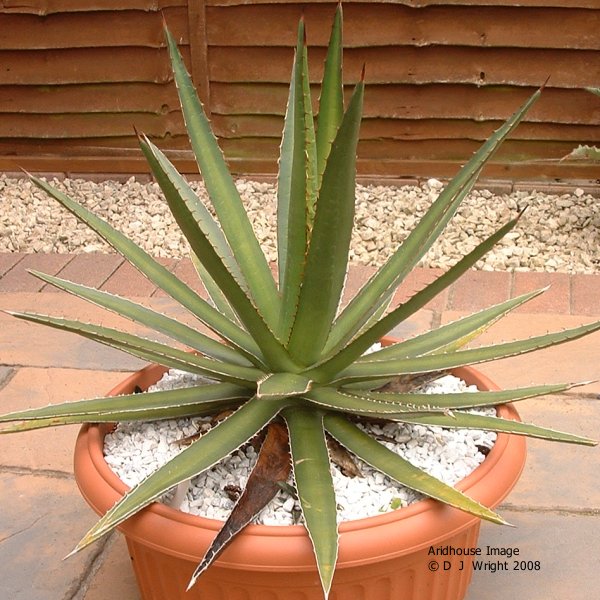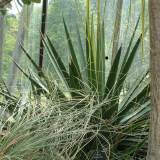
Description.
Plant. Solitary or clumping succulent rosette. Leaves numerous, generally 30 to 70 cm long, 3 to 5 cm wide in an open rosette. Light green to yellow-green, with or without pale mid-stripe, linear to lanceolate, rather thin, but thick toward base, rounded below, plane to concave above. Margins corneous, undulate to crenate, the teeth single or occasionally double on broad low teats, straight or mildly curved, slender, mostly 4 to 8 mm long and 1 to 2 cm apart. Terminal spine small, 1 to 2 cm long, subulate, brown to gray, flattened above at base.
It's Natural habitat is on limestone cliffs and rocky outcrops with low but Tropical arid to semi arid, dry lava/rock outcrops with frequent rainfall and good drainage. Located in Southeastern Texas southward into Mexico, along the east coast of Mexico to central Veracruz.
Agave lophantha has several close relatives. From A. lechuguilla it is distinguished by its flatter leavers with sinuous to undulate finer border, the teats usually with at least one double set of teeth, frequently more. A. xylonacantha is a coarser plant with relatively few leaves, the margins highly teated and with large variously flexed teeth. Some wide-leved forms of A. lophantha with margins crenate with large teats look very much like A. xylonacantha, and indeed may be inseparable. The teeth of A. lophantha are consistently more slender and more closely set than in A. lechuguilla and A. xylonacantha, and resemble more the fine teeth of the straight-margined A. funkiana. These four taxa comprise a closely related complex. All of them have leaf forms with pale broad center stripes, but it is not constantly present in any of them. Some populations of A. lophantha show mostly simple habits, while others sucker
More Pictures.
Click on thumbnails for larger picture



